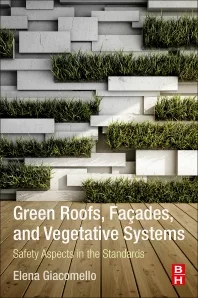Garden Roofs

What is a Garden Roof?
The garden roof is a category of green roofs, which are roofs substantially covered with vegetation. They first appeared in Europe and have been around for centuries. Green roofs can be placed on virtually any building, from low-slope to pitch roofs, including the industrial, commercial, institutional and residential sectors.
Modular green roof systems - garden roofs - are relatively new to the roofing arena, appearing within the past five years. Although the modular system has the same benefits as the traditional system, the entire garden is self-contained within a complete module. Filling, planting and maintenance take place on the ground in a nursery, then, the modules are brought to the roof via elevator, hoist or crane. A modular system weighs between 10 and 30 pounds per square foot, depending on depth of the growth media and whether supplemental irrigation is required.
Why Go Green?
As with anything "green," garden roofs can help the environment. They lower the urban heat island effect by insulating and shading buildings and improving air quality. Another common urban problem - stormwater runoff, which carries pollutants to the waterways, floods streets and overflows sewers - can be alleviated through a garden roof's natural absorption and reuse of precipitation. Garden roofs provide sound insulation, reducing indoor noise pollution for outdoor contributors by as much as 40 decibels, and create aesthetically pleasing usable space that can generate more revenue for building owners.
The second main benefit is that garden roofs can save building owners money. Because of their insulating properties, garden roofs have been proven to reduce heating and cooling costs, and significantly slow a building's heat gain and loss. In addition, they protect roofing membranes against ultraviolet radiation, extreme temperature fluctuations and puncture or other physical damage, significantly increasing a system's life expectancy.
The Future of Garden Roofs
To combat increasing energy demands and pollution, more and more city and state governments are encouraging and incorporating green roofs. For example, Portland, Ore., has led an aggressive regional program by providing financial, technical and educational incentives to those who install green roofs on their buildings. Other states have implemented similar incentive packages, including tax credits and avoidance of stormwater fees assessed for impervious surfaces. Local governments are in a key position to issue development goals and statutes that require a percentage of all new buildings to be green, and to issue tax, rebate or similar incentives for incorporating green aspects into building design.Warranty Implications
Driven by these incentives, garden roofs have taken off only recently in metropolitan areas. Like most big environmental ideas that make sense on paper, the real test of their staying power is dependent on the success of day-to-day application out in the field. Unfortunately, warranty problems related to garden roof repairs are rearing their ugly heads, causing confusion and finger pointing between contractors and building owners.Moving built-in-place systems to access the roof for maintenance and repairs can be both labor-intensive and costly. A built-in place system is laid out in several layers, including a waterproof membrane and drainage layers, insulation, root barriers, soil media, wind erosion blanket and plants. Contractors and building owners often are not aware of the fine print on most systems, which holds the building owner responsible for the cost of removing the green roof prior to the contractor making any repairs.
Because of their flexibility, modular garden roofs can be more easily adjusted and rearranged after installation. Roof maintenance and repair is easier and less expensive, in part because it doesn't destroy vegetation. Although roofing manufacturers have stood behind their normal roof membrane warranties with a modular system installed over it, it still remains the owner's responsibility to uncover the membrane should repairs be required.
One Solution
With this in mind, Mule-Hide is offering a wrap-around warranty program aimed at helping eliminate confusion between contractors and building owners. When the GreenGrid™ System is applied over a new Mule-Hide® Roofing System, the building owner qualifies for a Standard or Premium Wrap-Around 10-, 15- or 20-year System Warranty, which covers labor, the membrane and materials. This means no unexpected costs to the building owner. Because maintenance accessibility is required for the warranty, the GreenGrid System also offers pavers, which are important for access, aesthetics, and protection to the roof membrane and garden roof.<Looking for a reprint of this article?
From high-res PDFs to custom plaques, order your copy today!




